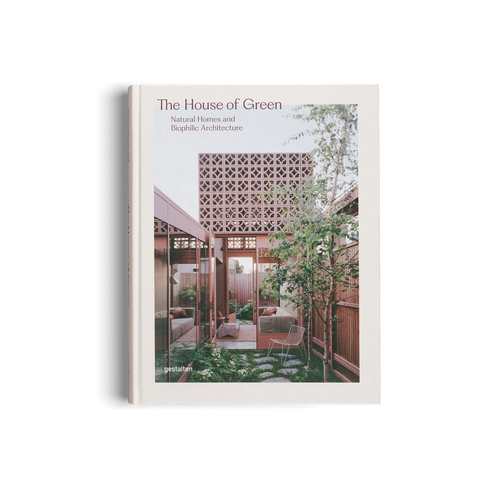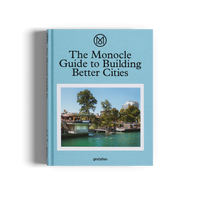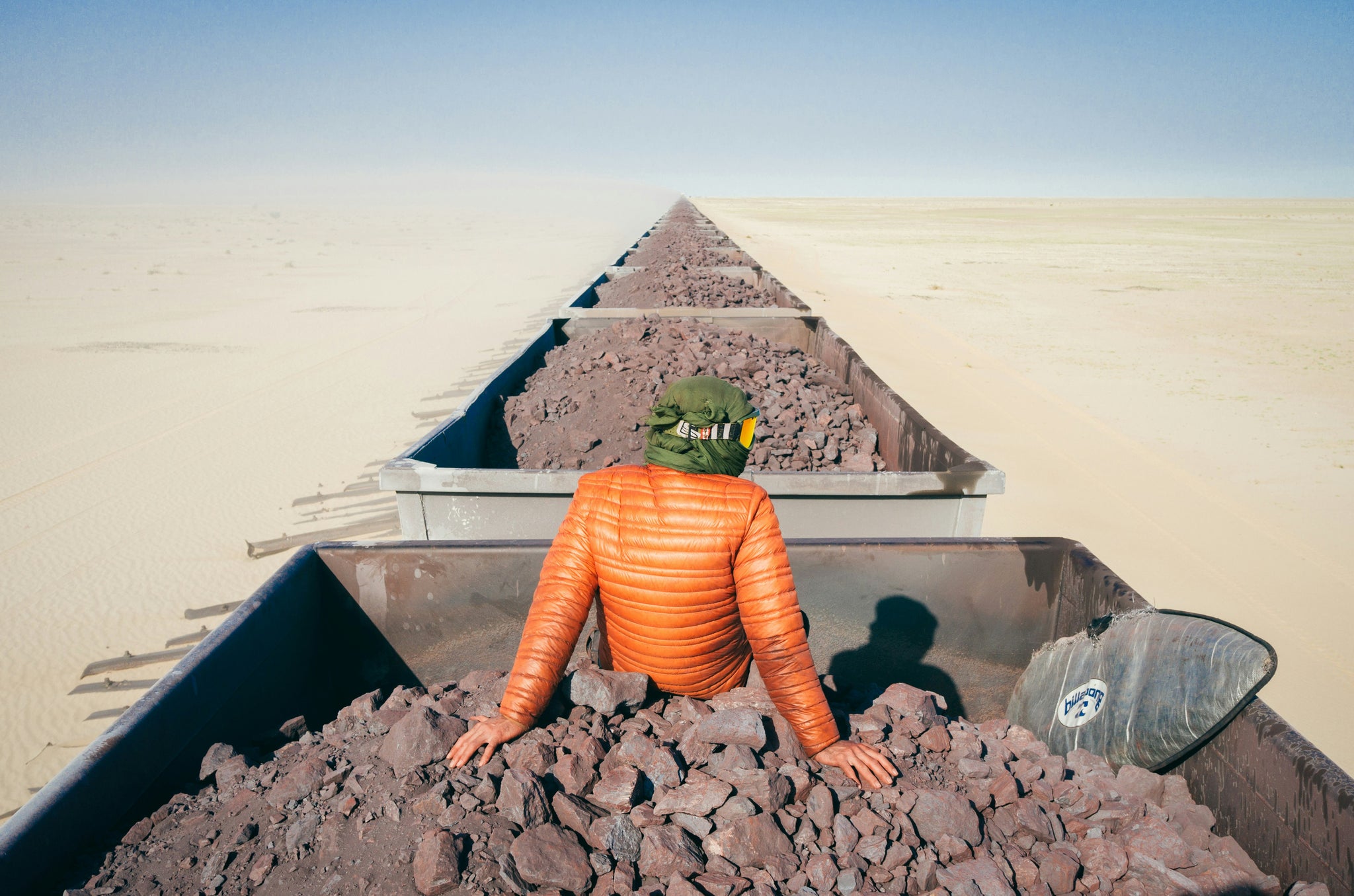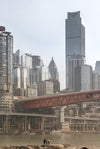
07/2019 architecture & interior travel
In 1968, China embarked on a journey of reform that saw its once closed-off Communist society open-up to the rapidly globalizing world around it. This transformation of mentality, economics, and culture was set to transform the People's Republic of China into a modern superpower. Over the course of four decades, China experienced the largest and fastest industrialization and urbanization in the world. The city of Chongqing is an embodiment of China's liberation to development, especially in the past five years. Belgian architecture photographer Kris Provoost has documented this burgeoning megacity's rise to futuristic heights, and problems that plague it through his Human vs City series.
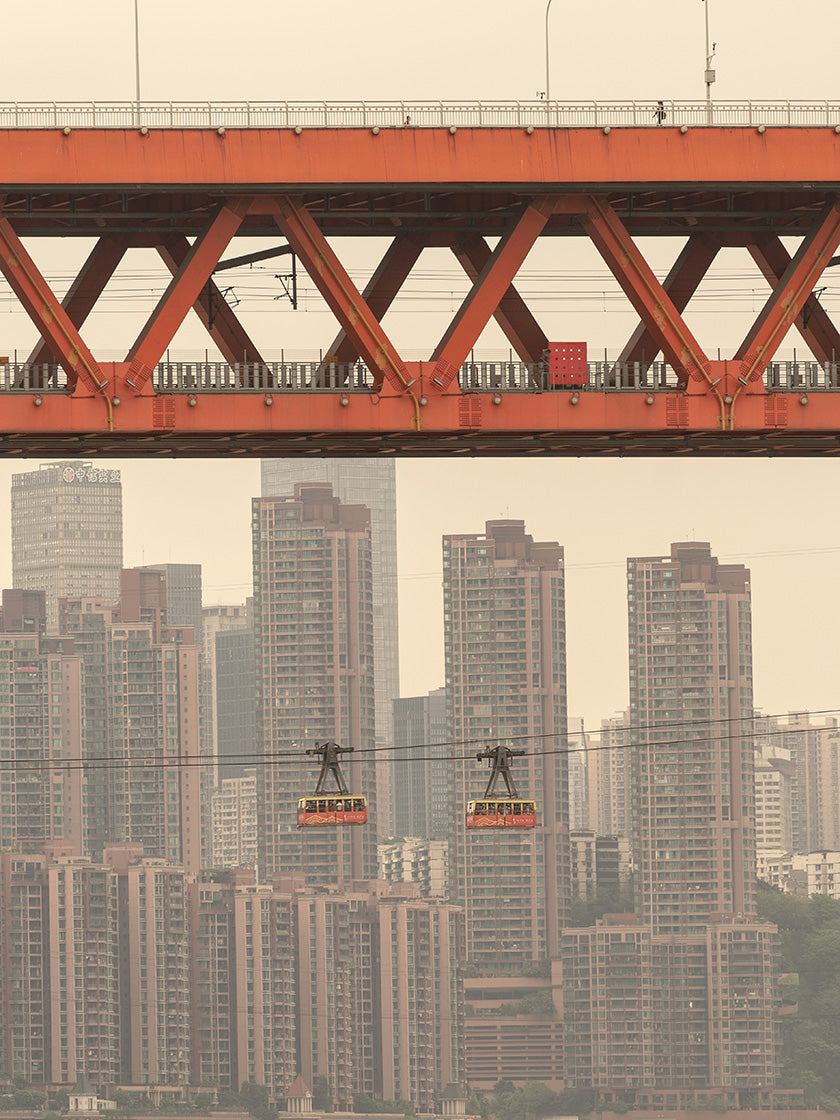
Fascinated by China's construction boom while a student, Kris vowed to visit the inspirational structures he saw during the 2008 Olympic Summer Games. Once there, he opted to stay and has been in China for the last nine years.
The history of Chongqing traces back over 3,000 years. It isn't a new megacity conceived within the Chinese Communist Party overnight to ease the burden of coastal cities. It has been the capital of the country, a leading river port and transportation hub long before the Qing Dynasty, and a focal part of the mainland for centuries. Prior to China's reform plan, Chongqing had a steady population of 2,544,566. Fast forward to 2019, its population has leapfrogged to an estimated 15,354,067. China has turned itself into a well-oiled urbanization machine in this time. Its urbanization rate is set to almost double from 36% in 2002 to 70% in 2050, roughly an increase of 400-700 million people.
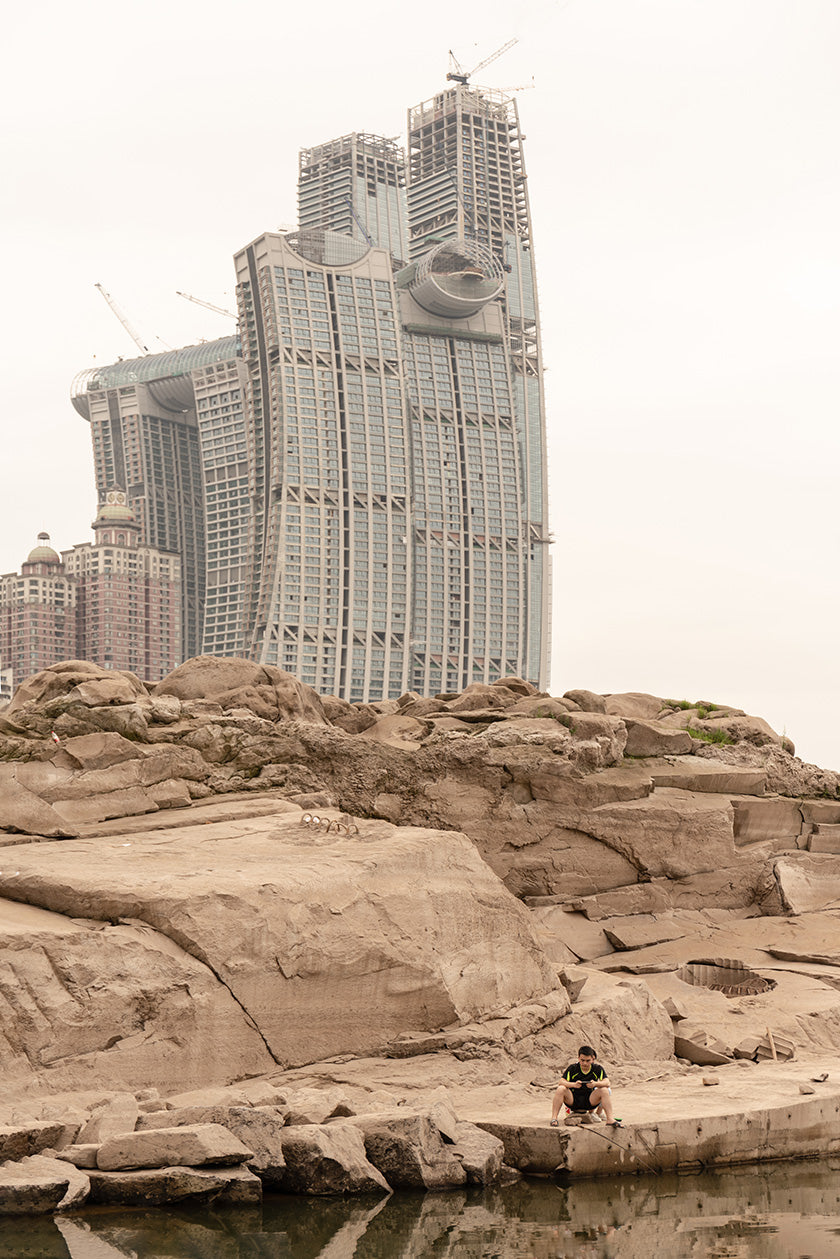
The Nan’an District is one of the latest and biggest projects to be built in the city. Raffles City is an audacious project where eight futuristic high-rises, six of which are connected by a vertiginous skybridge, are being built simultaneously.
Today one-quarter of the world's largest urban areas are in China. Capturing the changing face of Chongqing, Kris reflects on his photo series which documents humanity in a megapolis.
"Being fascinated by architecture and also designing it makes you realize that you need to observe buildings to learn how they fit in a city, how the appearance changes through different weather but most importantly is how people use them"
Hi Kris, can you tell us a little bit about yourself, your background, and what you currently do for a living?
I'm a Belgian architecture photographer who has been living in China since 2010. The first few years were in Beijing, before moving to the financial center of Shanghai. Now after six years of Shanghai, I'm relocating further south to Hong Kong. I have been designing large-scale buildings across China and Asia for the past nine years, but the past few years I have been slowly evolving as an architecture photographer. With the amount of construction happening in China and seeing how fast the cities evolve, it's a very fascinating place to be.
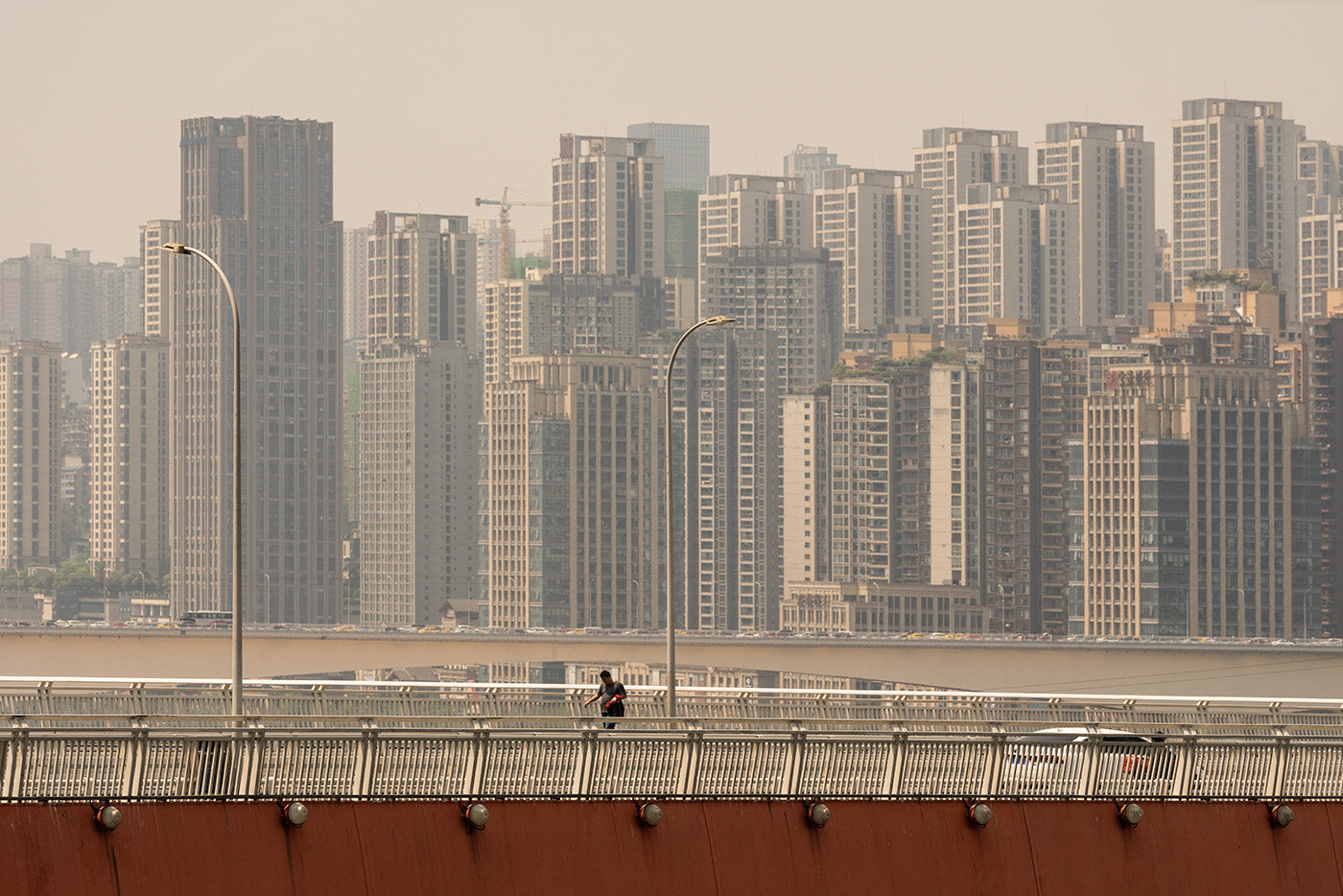
Kris wanted to document humanity in the vastness of the city, with a mysterious backdrop of concrete and glass that sometimes result in human figures disappearing into the cityscape.
What was your route into photography and architecture?
I can not pinpoint an exact time when I became interested in architecture, but I have always been fascinated by cities. From a young age, I had the opportunity to visit many cities around the world, and I wanted to contribute to buildings that make cities great. Eventually, I made this dream happen by moving to China. I've lived in megacities ever since and don't see myself moving to a small village anytime soon. Being fascinated by architecture and also designing it makes you realize that you need to observe buildings to learn how they fit in a city, how the appearance changes through different weather but most importantly is how people use them. Out of this realization came the interest in documenting buildings in the form of photography. There is something very interesting about spending a day or two in and around a building photographing it and trying to understand how it functions.
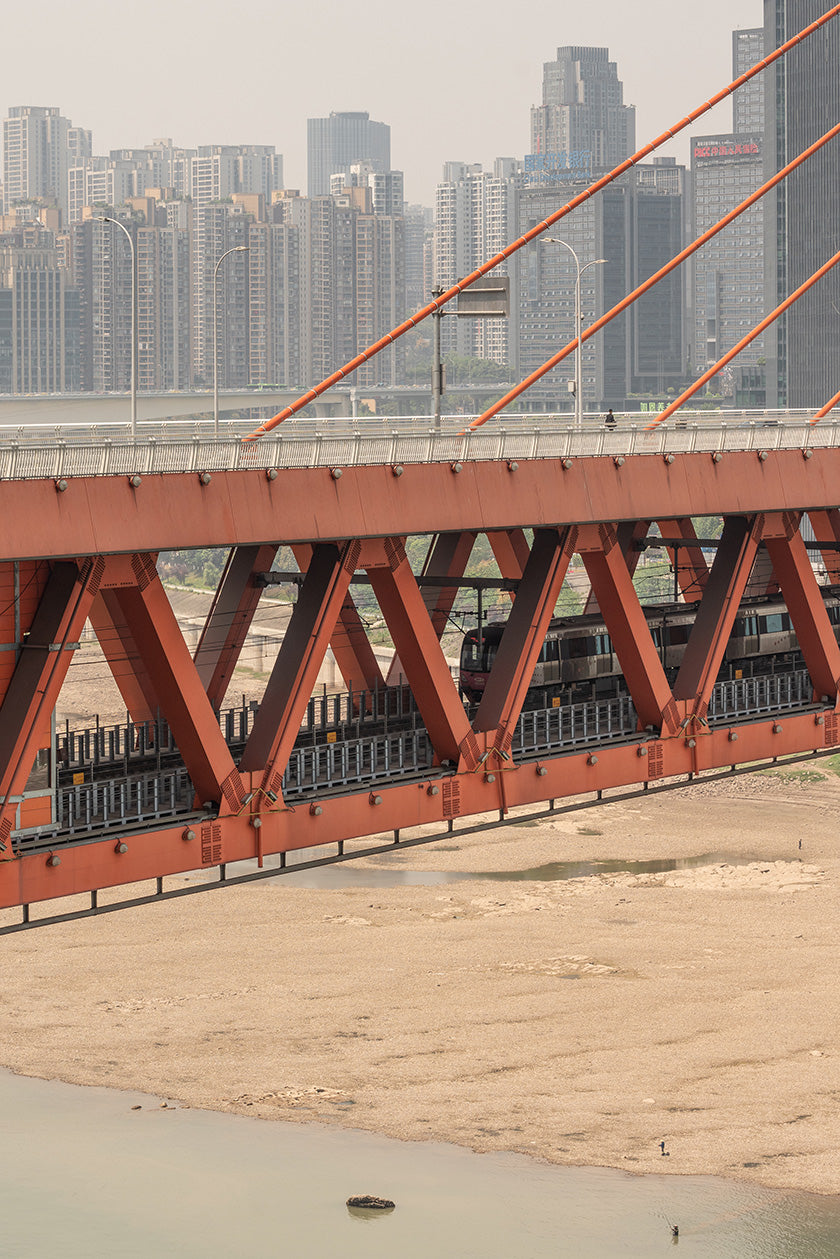
The orange bridge crosses straight through the densest part of the city, multiple forms of transport utilize the bridge every day.
After graduating in 2010, what made you want to relocate to Beijing?
I studied architecture from 2005 to 2010. This was a time when China was readying itself to host two major world events-the 2008 Summer Olympic Games and the Expo 2010 Shanghai China. During my studies, there was a lot of media attention aimed at China and all the breathtaking architecture they were building. The 2008 Summer Olympic Games was a showcase of spectacular architecture. I was truly fascinated by it all and pledged to go see Beijing once I graduated. One month after graduating as an architect I flew to China to see all this architecture in person. While traveling around I was looking for a job, because why not take advantage of this massive construction boom. I eventually found a job in Beijing and now nine years later I am still living in (greater) China.
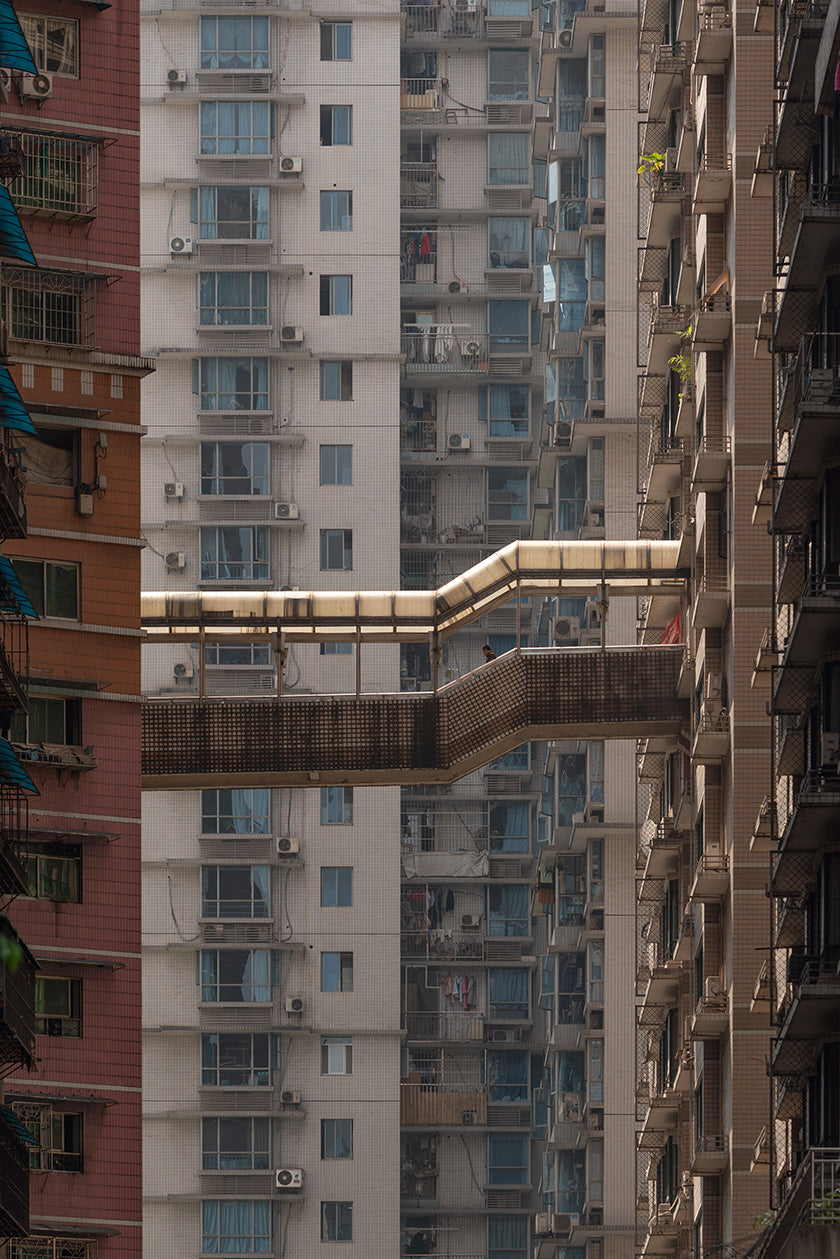
As density reaches new heights in the city, so do the walkways that connect residents.
Since then you’ve been based in Shanghai and photographed Chongqing, why are these places fascinating from urban development and architecture perspectives?
Chinese cities become very fascinating the longer you spend time in them. Everything changes very rapidly and there is always something new to observe (good or bad). Having an architecture background, it is interesting to observe how people use, live, or work in those cities. I lived in Shanghai for six years, and every day I was eager to visit a different area in the city and see what evolved. During those six years, the city really stepped up and nowadays it is one of the greatest in the world. It has an outstanding public transport network, fantastic architecture, different atmospheres throughout the city, and an endless riverbank development with musea, running tracks, and much more.
Chongqing is very different from Shanghai, you can quickly see that in the photos. It is very rough, immensely dense, but also here you can feel things evolve for the better very quickly. I went there two years ago and then again this year and a lot had changed during this time. Chongqing is a unique city in mainland China that is incomparable with any other city in the world. The closest comparison would be Hong Kong but then its unapologetic, bad-ass, wreckless cousin. And this fascinates me very much.
The longer I stay in China, the more interested I become in really understanding the different cities.
"I started the series because you have people doing their daily stuff, but in the backdrop, there is a massive city looming in the fog"
Can you tell us about your time working for Zara Hadid Architects and Buro Ole Scheeren, how have they influenced your approach to architecture and photography?
They have influenced me enormously. I wouldn't be where I am today if it wasn't for those two firms, especially working for Ole Scheeren. Buro Ole Scheeren was at times an extremely exhausting period, but the knowledge and passion for architecture that was there amongst the tightly knit group of colleagues were so addictive. Even though I left that office many years ago, I look back at it often and whenever I catch up with friends (back then colleagues) whenever we run into each other around the world, the conversation always leads back to our time together during all those all-nighters. One of the most important things I learned was how to look at architecture and cities. Not just look, but really look. How does a building impact the city and its citizen, how are the proportions defining the surroundings, how can it shape a larger context? These skills I use every single day in my photography. Finding the story behind a building.
"Chongqing is surreal, but I can imagine living there you get perfectly used to it. You have to accept the density, the heat, the dust, the constant climbing in the streets"
Human vs City: Where did the idea come from and what was the aim of the project?
The idea of the series came when I was walking along one of the riverbanks in the city. What is interesting about Chongqing is that its build on one few peninsulae, secondly it is hilly so there are large level differences, and thirdly the riverbanks are very deep, it is quite a walk down to get to the actual water, due to different water levels. While these banks are underdeveloped they are used by citizens to relax, to let their kids play or to have picnics. And that's where I started the series because you have people doing their daily stuff, but in the backdrop, there is a massive city looming in the fog. There came the idea to portray the city in a set of photos where the city and humans are together in the frame. Each photo has a group or a single person in them, and at times they are difficult to find which makes the photos have a certain depth. The result is at times surreal. I spend three days in the city, walked many miles and whenever I wouldn't expect it, I found the most rewarding sceneries. Nothing was planned because people and city are always omnipresent. I just had to find the right angles.
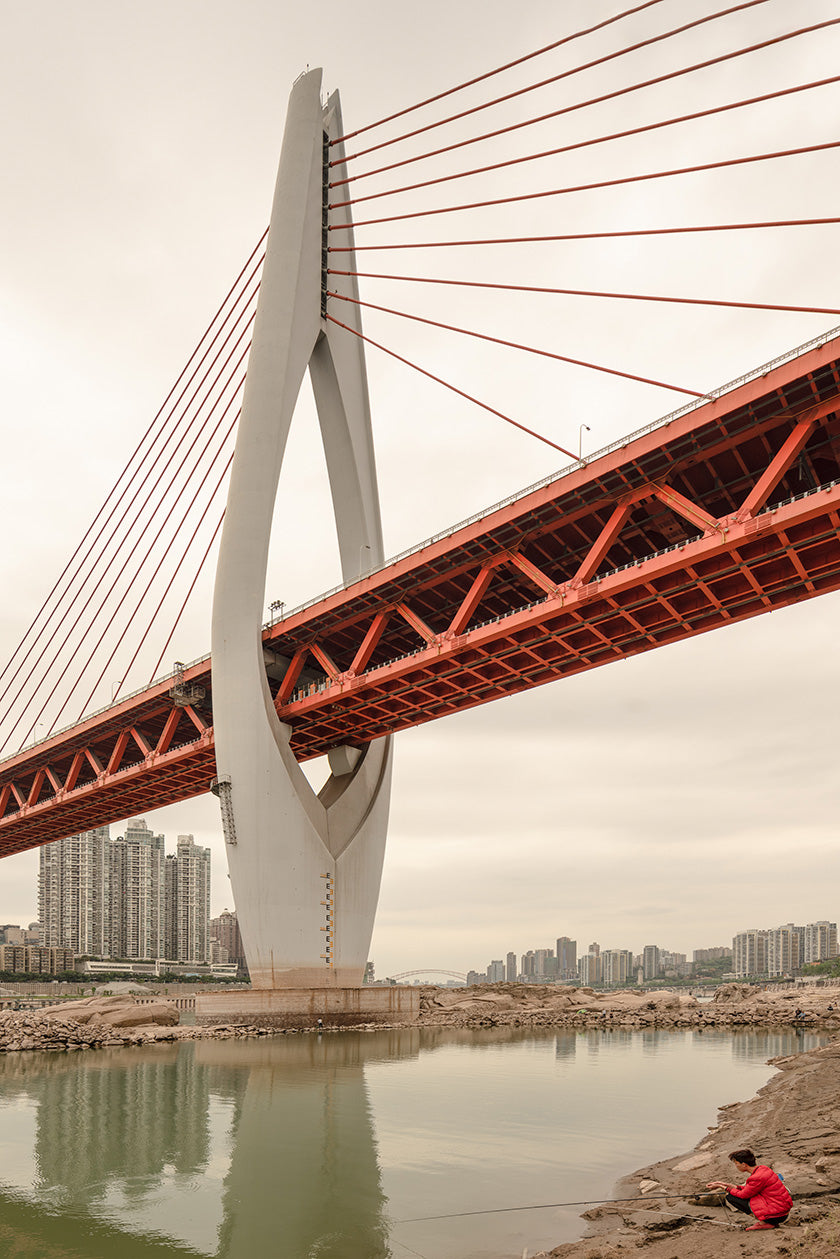
The deep riverbanks are used for leisure by locals while still highly underdeveloped. Kris sees Chongqing families playing, fishing, and commuting along the banks every day.
How do humans coexist with the city of Chongqing?
They coexist because it feels like they don't have another choice. Perhaps they need each other. The city is its own organism that needs people. And people need the city to live and to be able to do their business. Visiting Chongqing is surreal, but I can imagine living there you get perfectly used to it. You have to accept the density, the heat, the dust, the constant climbing in the streets. You need to be tough to be able to survive in Chongqing, and the city shows that wherever you look.
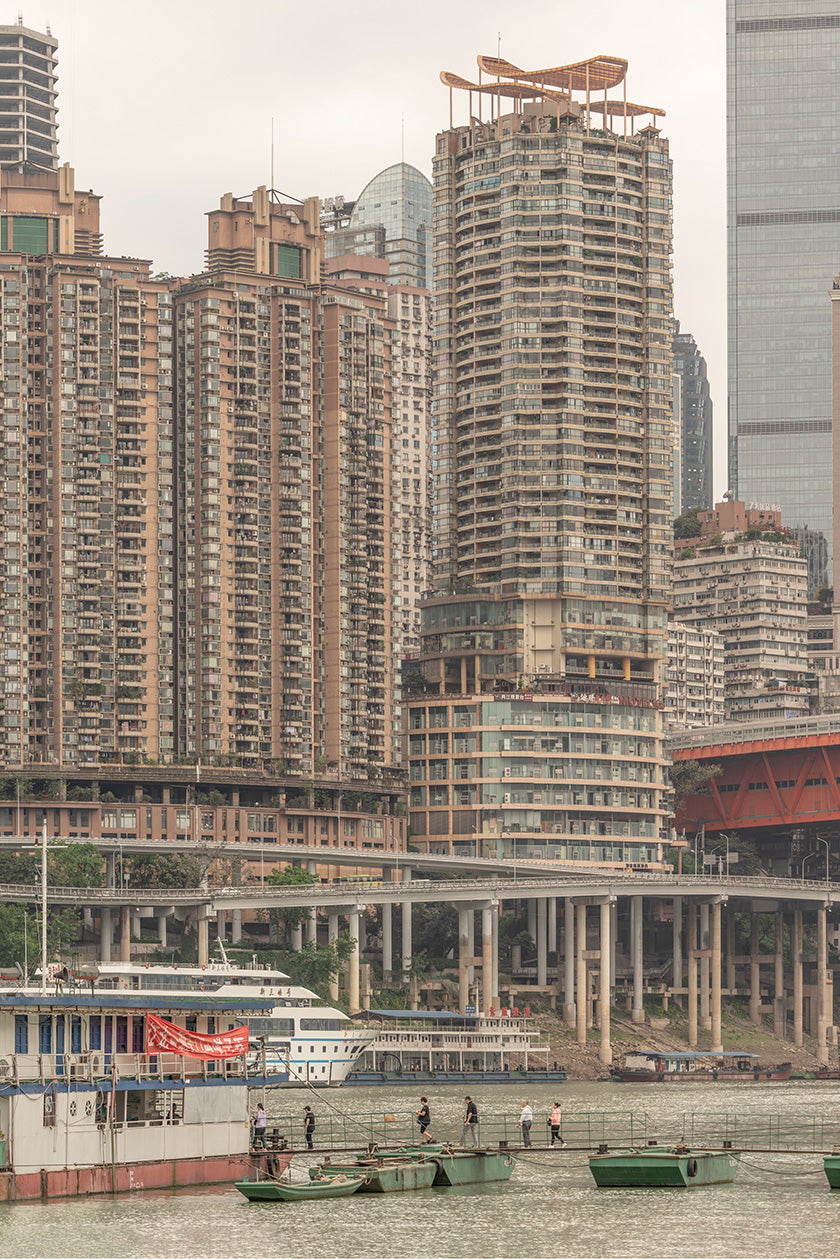
In 2017, Chongqing was named the fastest-growing tourism city in the world. The modern port city on the upper reaches of the Yangtze River at the confluence of the Yangtze and Jialing Rivers has become a highly touted place for local and international visitors.
Is there anywhere in the world like this megapolis?
Like I said before there is no other city like Chongqing. But there are many other megapoleis in China that have their own surreal character. The immense megapolis of Pearl River Delta (Hong Kong, Shenzhen, Guangzhou) is also very fascinating. How these cities overtime almost melts together. There are actual plans to really merge those cities and make it the first 100 million people 'city.' Another one I'm quite familiar with is the Yangtze River Delta megapolis (Shanghai, Suzhou, Nanjing). These cities have been developing so fast that moving between them is faster and smoother than ever. The high-speed rail network is simply perfect, smoothly integrated with a metro network. If (or rather when) everyone will live in cities, this megapolis will be a prime example of good integration. Nine years ago when I first moved to China, I was scared and worried about how difficult it would be to get anywhere since language was going to be an issue. But now, nine years later, I can say that moving around Chinese cities is the easiest thing there is. I feel more comfortable flying halfway across the country to a city that I have never been to before than going to another city in my own country Belgium.
How do we make better cities–places that work for people of all ages and backgrounds? Monocle unpacks what makes a great city.


